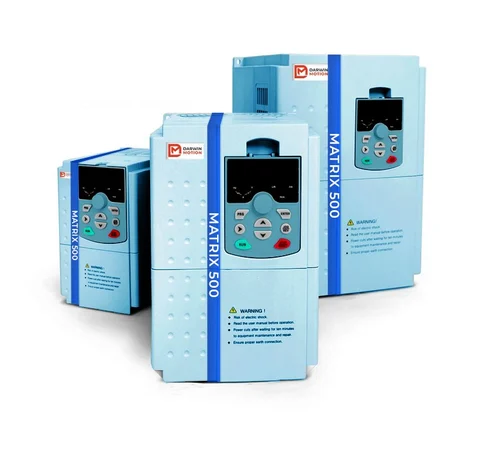Posted on 5th Apr 2024

In the realm of industrial automation, efficiency, precision, and flexibility are paramount. As technology advances, the integration of Variable Frequency Drives (VFDs) with Programmable Logic Controllers (PLCs) has emerged as a powerful solution for optimizing processes across various industries. This symbiotic relationship between VFDs and PLCs offers unprecedented control over machinery, resulting in enhanced productivity, reduced energy consumption, and improved overall performance.
Understanding Variable Frequency Drives (VFDs) and Programmable Logic Controllers (PLCs)
Before delving into the integration, it's essential to grasp the individual roles of VFDs and PLCs.
VFDs are electronic devices designed to control the speed, torque, and direction of an AC motor by varying the frequency and voltage of the electrical supply. By adjusting these parameters, VFDs such as solar vfd drive allow for precise control over motor operation, enabling smoother startups, speed regulation, and energy savings. They find extensive application in industries such as manufacturing, HVAC systems, pumping systems, and more.
PLCs are industrial digital computers programmed to automate electromechanical processes. They monitor inputs and outputs, execute logic-based operations, and control machinery or processes based on predefined programs. PLCs offer a flexible and robust platform for automation, capable of handling complex control tasks in real-time. They are the backbone of modern industrial automation systems.
The integration of VFDs with PLCs enables seamless communication and coordination between these two systems, unlocking a plethora of benefits for industrial processes.
PLCs provide a centralized control interface for VFDs, allowing operators to monitor and adjust motor parameters such as speed, acceleration, and deceleration. By integrating VFD control into PLC programs, operators can implement advanced control algorithms, respond dynamically to process variables, and adapt operations to changing requirements with ease. This flexibility enhances process efficiency and enables optimization for various operating conditions.
In many industrial applications, multiple motors or actuators need to operate synchronously to achieve desired outcomes. PLCs facilitate precise synchronization of multiple VFD-controlled motors by orchestrating their operation through synchronized control signals. Whether it's coordinating conveyor belts in a manufacturing facility or regulating pumps in a water treatment plant, the integration of VFDs with PLCs ensures seamless coordination, minimizing downtime and maximizing productivity.
PLCs equipped with advanced programming capabilities enable comprehensive fault monitoring and diagnostics for VFDs. By integrating error detection algorithms into PLC programs, abnormalities in motor performance such as overcurrent, overvoltage, or excessive heating can be detected in real-time. The PLC can then trigger appropriate responses, such as fault isolation, alarm notifications, or automatic shutdowns, to prevent equipment damage and ensure operational safety.
One of the significant advantages of VFD or ac drive is their ability to optimize energy consumption by adjusting motor speed to match the required load. When integrated with PLCs, energy optimization strategies can be further enhanced through intelligent control algorithms. PLCs can analyze process variables, demand patterns, and energy tariffs to dynamically adjust VFD settings for maximum energy efficiency. This synergy between VFDs and PLCs results in substantial energy savings and reduced operating costs over time.
As industrial automation requirements evolve, scalability and future-proofing become crucial considerations. The integration of VFDs with PLCs offers scalability by allowing for seamless integration of additional VFDs or expansion of control functionalities without significant modifications to existing infrastructure. Moreover, PLCs are inherently adaptable, capable of accommodating new technologies and protocols, ensuring compatibility with future advancements in VFD technology.
The integration of Darwin Motion Variable Frequency Drives with Programmable Logic Controllers represents a paradigm shift in industrial automation, empowering businesses to achieve new levels of efficiency, reliability, and control. By leveraging the strengths of both systems, operators can optimize processes, improve productivity, and reduce operating costs across diverse industrial applications. As technology continues to advance, the synergy between VFDs and PLCs will play an increasingly vital role in shaping the future of industrial automation, driving innovation, and unlocking new possibilities for industries worldwide.